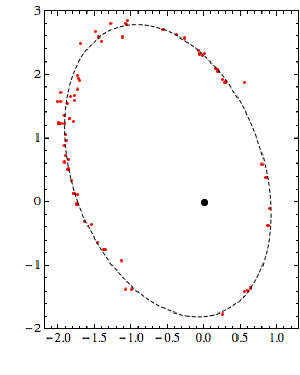Blog
Give and Take
30 January 2014
 Keck Observatory
Keck ObservatoryIf you’ve ever stepped on a scale to measure your weight, you’ve done a basic physics experiment. The number on the scale represents the force of the Earth’s gravity on your mass. The greater your mass, the greater your weight. But this number also represents the weight of the Earth in your gravitational field. Because (as per Newton’s third law) the force of the Earth on you and the force of you on the Earth must be the same, stepping on the scale determines how strongly you and the Earth are attracted to each other. This give and take between masses is also important in astrophysics, such as the determination of stellar masses.
When we look at a solitary star, it is a bit difficult to determine its mass. We can infer its mass from things such as temperature and brightness, but how do we know such an inference is correct? It turns out we can determine the masses of some stars through the fact that they gravitationally attract each other.
 Brian Koberlein
Brian KoberleinThe first known binary stars were observed in the 1800s, but it wasn’t until the 1900s with the introduction of the filar micrometer that decently accurate measurements could be made. This device allowed you to center your telescope on the primary star, and then measure the position of the secondary star relative to the primary. By taking measurements over time (sometimes years or decades) you can start to see the companion star trace its path. In the figure here, I’ve plotted observations of the star Xi Ursae Majoris.
The good news is that the motion of a binary companion is an ellipse, so with a bit of mathematics you can fit your observation to an elliptical path. The bad news is that the positions we observe are within the plane of our field of view. The actual orbit is usually tilted relative to us, so we have to do more math to determine its actual orbit. In times past this had to be done by hand, and was really laborious. With modern computers we can fit the data and calculate orbits pretty easily.
Of course if you know the orbit of the companion star you can also calculate their masses. Knowing their separation distance and orbital period you can calculate their masses via Kepler’s laws. Once we’ve determined their masses, we can look at other properties such as their brightness and temperature to see how they correlate to mass.
In modern times we have a much better handle on stellar evolution, so there are ways of determining stellar mass that don’t require a comparison to binary stars. But the basic gravitational property of give and take seen in binary stars provided a much needed step toward that level of understanding.